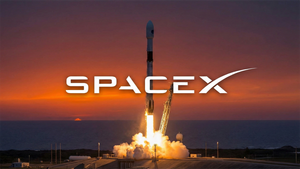
As of late 2024 and extending into 2025, the global food security landscape presents a nuanced and often contradictory picture. While the world has seen modest improvements in the overall prevalence of hunger, with a decline in the number of people experiencing undernourishment in certain regions, these gains are overshadowed by a formidable array of persistent and intensifying risks. For financial markets, this delicate balance translates into sustained volatility in food commodity prices, heightened supply chain vulnerabilities, and a growing imperative for strategic investments in resilient and innovative agricultural systems.
The paradox of improving statistics alongside escalating threats underscores a complex environment where progress is unevenly distributed and deeply fragile. Geopolitical conflicts, the relentless march of climate change, and economic headwinds continue to be primary drivers of acute food insecurity, creating a volatile backdrop for public companies in the agricultural, food processing, and retail sectors. Investors are therefore navigating a market where both significant challenges and transformative opportunities coexist, demanding a keen understanding of the underlying dynamics of global food supply and demand.
A Fragile Equilibrium: Gains Offset by Global Instability
The narrative of global food security in 2024-2025 is one of a fragile equilibrium, where hard-won progress is constantly tested by a confluence of crises. According to recent data, the estimated global population experiencing hunger saw a welcome decrease to 8.2% (approximately 673 million people) in 2024, down from 8.5% in 2023. This improvement was particularly notable in Southern Asia and Latin America, with a decline in the prevalence of undernourishment. Furthermore, the number of people unable to afford a healthy diet also decreased to 2.60 billion in 2024, an improvement from 2.76 billion in 2019, albeit with uneven distribution across income levels. The US Department of Agriculture (USDA) Economic Research Service (ERS) even projects significant long-term improvements, forecasting that by 2035, only 6.5% of the global population, or roughly 333 million people, will be food insecure, largely due to stronger per capita GDP growth and easing food price inflation. These optimistic projections are partly buoyed by technological advancements in AgriTech, including AI, precision farming, IoT, and gene-editing, which promise enhanced productivity and resilience.
However, these positive trends are critically undermined by a host of persistent and intensifying risks. Conflict remains the primary driver of acute food insecurity, with regions like Sudan and the Gaza Strip facing ongoing or imminent famine due exacerbated violence and severe restrictions on humanitarian access. Climate change acts as a "force multiplier," bringing more frequent and severe weather events such as droughts, floods, and super-storms, which devastate agricultural production and infrastructure. Economic strains, including high food price inflation (which peaked at 30% in low-income countries in May 2023) and currency depreciation, continue to erode purchasing power. A severe deterioration in humanitarian aid funding, with potential cuts of up to 45% in 2025, further exacerbates the crisis for over 231 million people relying on assistance. Compounding these issues are deep regional disparities, with hunger continuing to rise in most sub-regions of Africa and Western Asia, and a projected mismatch where global demand for grains is expected to grow faster (2.2% annually) than production (1.6% annually) through 2035, leading to significant deficits.
Corporate Crossroads: Winners and Losers in a Volatile Market
The intricate dynamics of global food security present a mixed bag for public companies, creating distinct winners and losers in the financial markets. On one hand, companies at the forefront of agricultural innovation and sustainable practices are poised for growth. Deere & Company (NYSE: DE), a leader in agricultural machinery and precision agriculture technology, stands to benefit from increased investment in efficiency and data-driven farming. Similarly, Bayer AG (ETR: BAYN), with its focus on crop science, seeds, and digital farming solutions, is well-positioned to capitalize on the demand for climate-adapted crops and enhanced yields. Startups and established firms specializing in AgriTech, such as those developing AI-powered analytics, vertical farming solutions, and advanced irrigation systems, are attracting significant capital as the industry seeks resilient production methods. Companies investing in diversified, localized, and transparent supply chains, leveraging technologies like blockchain, will also gain a competitive edge.
Conversely, traditional food manufacturers and retailers face considerable headwinds. Giants like Nestlé S.A. (SWX: NESN), Unilever PLC (LSE: ULVR), Archer-Daniels-Midland Company (NYSE: ADM), and Tyson Foods, Inc. (NYSE: TSN) are susceptible to squeezed profit margins due to volatile commodity prices, increased raw material costs, and disruptions in global supply chains. Their reliance on extensive, often linear, supply networks makes them vulnerable to geopolitical tensions, trade policy shifts, and extreme weather events that can halt production or impede logistics. Companies with concentrated sourcing in conflict-prone or climate-vulnerable regions face elevated risks. The rising cost of food also impacts consumer purchasing power, potentially shifting demand towards more affordable, generic brands or reducing discretionary spending on premium products, thereby challenging companies in the consumer staples sector to adapt their pricing and product strategies.
Wider Significance: Reshaping Global Commerce and Policy
The evolving food security landscape carries profound wider significance, reshaping global commerce, policy frameworks, and societal stability. The accelerating adoption of AgriTech and the imperative for sustainable food systems are becoming defining industry trends, pushing traditional agricultural practices towards a more resilient, data-driven, and environmentally conscious future. This shift triggers ripple effects across various sectors: increased demand for renewable energy in agriculture, growth in water management solutions, and a burgeoning market for alternative proteins and regenerative farming inputs. The volatility in food prices, exacerbated by geopolitical and climate events, also has significant macroeconomic implications, potentially fueling inflation and hindering central banks' efforts to stabilize economies, particularly in developing nations.
Governments and international bodies are increasingly recognizing food security as a national security issue. This translates into potential regulatory and policy shifts, including greater investment in strategic grain reserves, increased subsidies for domestic agricultural production, and a re-evaluation of trade policies to prioritize food self-sufficiency or diversified sourcing. Historical precedents, such as the 2007-2008 food crisis and its links to social unrest in the "Arab Spring" countries, serve as stark reminders of how food insecurity can destabilize regions and trigger broader geopolitical consequences. The current situation, with its added layers of climate urgency and technological potential, suggests a pivot towards more integrated, multi-sectoral approaches to food system governance, demanding collaboration between public and private stakeholders to build truly resilient global food systems.
What Comes Next: Pathways to Resilience and Emerging Opportunities
Looking ahead, the trajectory of global food security will be shaped by a complex interplay of short-term exigencies and long-term strategic shifts. In the immediate future, commodity markets are expected to remain volatile, particularly for staple grains, as geopolitical tensions and unpredictable weather patterns continue to create supply uncertainties. Humanitarian organizations will face immense pressure to address acute food crises with dwindling aid budgets, necessitating innovative funding models and more efficient delivery mechanisms. Governments, meanwhile, will grapple with the dual challenge of managing domestic food inflation while contributing to global food stability.
Over the longer term, the current challenges are likely to accelerate a fundamental transformation of the global food system. This will include a more rapid transition towards climate-resilient agriculture, characterized by drought-resistant crops, advanced irrigation techniques, and regenerative farming practices that enhance soil health. There will be an increased focus on developing diversified and localized supply chains to mitigate risks associated with global disruptions. Market opportunities will abound in areas such as advanced water management technologies, sustainable packaging, and solutions for reducing food waste across the value chain. Investors should also watch for the continued integration of AI and data analytics in every aspect of farming, from predictive analytics for crop yields to automated pest control. Potential scenarios range from a "best-case" outcome of coordinated global efforts, rapid technological adoption, and climate stabilization leading to significant improvements, to a "worst-case" scenario of escalating conflicts, severe climate shocks, and economic downturns resulting in widespread famine and social unrest, profoundly impacting global markets.
A Crucial Juncture for Global Food Systems
In wrapping up, the current state of global food security represents a crucial juncture for humanity and the financial markets. While recent data points to some encouraging improvements in reducing hunger, these gains are precarious, overshadowed by the relentless pressures of geopolitical conflict, climate change, and economic instability. The paradox of progress amidst intensifying risks defines the operating environment for public companies and the investment landscape.
Moving forward, the market will likely remain characterized by volatility, but also by clear directions for strategic investment. Companies that prioritize innovation in AgriTech, build resilient and diversified supply chains, and embed sustainability into their core operations are best positioned to thrive. The lasting impact of this period will likely be a re-imagination of global food systems, pushing them towards unprecedented levels of resilience or exposing their deepest fragilities. Investors should closely monitor commodity price trends, geopolitical developments, climate policy actions, and the pace of AgriTech innovation. Corporate strategies focused on supply chain resilience and strong ESG metrics will be key indicators of future success in a world where food security is no longer just a humanitarian concern, but a central driver of economic stability and market performance.
This content is intended for informational purposes only and is not financial advice







